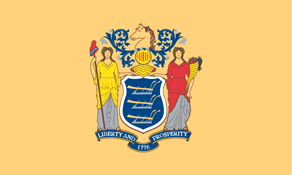New Jersey State Standards for Arts Education: Grade 8

Currently Perma-Bound only has suggested titles for grades K-8 in the Science and Social Studies areas. We are working on expanding this.
NJ.1.1. (Aesthetics) All students will use Aesthetic knowledge in the creation of and in response to Dance, Music, Theater, and Visual Art.
A.1. Knowledge: Examine works of art that communicate significant cultural beliefs or set of values.
A.2. Knowledge: Use domain-specific vocabulary relating to symbolism, genre, and performance technique in all arts areas.
A.3. Knowledge: Analyze how art is often defined by its originality.
B.1. Skills: Differentiate between the unique and common properties in all of the arts.
B.2. Skills: Distinguish among artistic styles, trends, and movements in various art forms.
B.3. Skills: Express how art is inspired by an individual's imagination.
B.4. Skills: Describe changes in meaning over time in the perception of a known work of art.
NJ.1.2. (Creation and Performance) All students will utilize those skills, media, methods, and technologies appropriate to each art form in the creation, performance, and presentation of Dance, Music, Theater, and Visual Art.
A.1. Dance: Demonstrate a broad range of dynamics and movement qualities by manipulating aspects of time, space, and energy.
A.2. Dance: Choreograph and perform dance works based on social themes, using elements and production values that serve the selected theme.
A.3. Dance: Develop and perform movement sequences and dance phrases that demonstrate rhythmic acuity, and employ such choreographic structures as AB, ABA, canon, call and response, or the use of narratives.
A.4. Dance: Design a dance work that incorporates at least two other art forms to enhance the central idea.
B.1. Music: Perform compositions containing progressively complex notation and use standard notation to record musical ideas.
B.2. Music: Perform independently and in groups a repertoire of diverse genres and cultures with appropriate expressive qualities.
B.3. Music: Improvise original melodies and/or rhythms over given chordal progressions or rhythmic accompaniments in a consistent style, meter, and tonality.
B.4. Music: Identify careers and lifelong opportunities for making music.
C.1. Theater: Analyze descriptions, dialogue, and actions to discover, articulate, and create and portray character behaviors and justify character motivation.
C.2. Theater: Participate in theatrical presentations individually and in ensemble, interacting as invented characters across a spectrum of social/historical contexts.
C.3. Theater: Create action within the context of a given situation using acting skills such as sensory recall, concentration, breath control, vocal projection, body alignment, and control of isolated body parts that suggest artistic choices, dramatic action within the context of a given situation, using acting skills that generate a sense of truth, focus, character, personal or emotional ownership, ensemble relationship, physical control, and vocal clarity.
C.4. Theater: Describe and analyze the components of theatrical design and production.
D.1. Visual Art: Incorporate various art elements and principles in the creation of works of art.
D.2. Visual Art: Explore various media, technologies and processes in the production of two and three dimensional art.
D.3. Visual Art: Identify form, function, craftsmanship, and originality when creating a work of art.
D.4. Visual Art: Identify careers and lifelong opportunities for making art.
NJ.1.3. (Elements and Principles) All students will demonstrate an understanding of the elements and principles of Dance, Music, Theater, and Visual Art.
A.1. Dance: Describe the principles of contrast and transition, the process of reordering and chance, and the structures of AB, ABA, canon, call and response, and narrative.
A.2. Dance: Observe and explain how different accompaniment such as sound, music, or spoken text can affect the meaning of a dance.
B.1. Music: Analyze the application of the elements of music in a diversity of musical works.
B.2. Music: Examine how aspects of meter, rhythm, tonality, intervals, chords, and harmonic progressions are organized and manipulated to establish unity and variety in musical compositions.
B.3. Music: Describe various roles that musicians perform and identify representative individuals and their achievements that have functioned in each role.
C.1. Theater: Investigate the structural characteristic of plays.
C.2. Theater: Assess character motivations within the construct of scripted plays.
C.3. Theater: Explain the interdependent relationship between the performance, technical design, and management functions of production.
C.4. Theater: Analyze scenes with regard to , thematic and artistic intent, situation, character, and motivation.
D.1. Visual Art: Define the elements of art and principles of design that are evident in everyday life.
D.2. Visual Art: Apply the principles of design to interpret various masterworks of art.
D.3. Visual Art: Compare and contrast works of art in various media that utilize the same arts elements and principles of design.
NJ.1.4. (Critique) All students will develop, apply and reflect upon knowledge of the process of critique.
A.1. Knowledge: Explain the process of critique using the progression of description, analysis, interpretation, and evaluation.
A.2. Knowledge: Compare artistic content among contrasting art works in the same domain.
B.1. Skills: Evaluate the judgment of others based on the process of critique.
B.2. Skills: Compare and contrast the technical proficiency of artists.
NJ.1.5. (History/Culture) All students will understand and analyze the role, development, and continuing influence of the arts in relation to world cultures, history, and society.
A.1. Knowledge: Analyze how technological changes have influenced the development of the arts.
A.2. Knowledge: Examine how the social and political environment influences artists in various social/historical/political contexts.
B.1. Skills: Identify the common artistic elements that help define a given historical period.
B.2. Skills: Discuss how cultural influences add to the understanding of works of art.